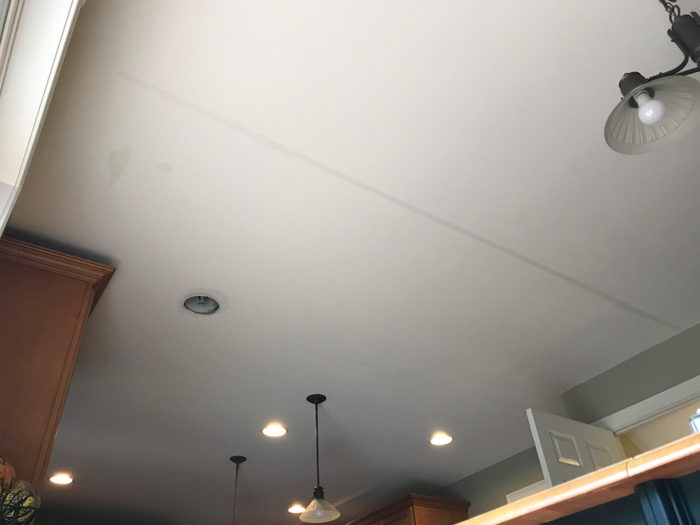Experiencing a toilet overflow is not only inconvenient but can also lead to significant water damage, especially if it leaks through the ceiling. In this guide, we’ll explore what to do when your Toilet Overflowed And Leaked Through Ceiling, including steps to mitigate damage, safety precautions, and preventative measures to avoid future incidents.

Understanding the Risks of Toilet Overflowed and Leaked Through the Ceiling
A toilet overflow occurs when the bowl fills beyond its capacity and spills onto the floor. If left unchecked, the water can seep into the subflooring and surrounding areas, causing damage to walls, floors, and ceilings. When the water reaches the ceiling, it can create unsightly stains, weaken the structural integrity, and promote the growth of mold and mildew.
Identifying the Signs of Toilet Overflow and Ceiling Leakage
- Water pooling around the base of the toilet: This is the most obvious sign of a toilet overflow. If you notice water pooling on the floor around the toilet, it’s essential to address the issue promptly to prevent further damage.
- Water stains or discoloration on the ceiling: If you notice water stains or discoloration on the ceiling below the bathroom, it could indicate that water has leaked through from an overflowed toilet. In severe cases, you may even notice bulging or sagging in the ceiling.
- Musty odor: Mold and mildew thrive in damp environments, so if you detect a musty odor in the bathroom or adjacent rooms, it could indicate hidden water damage caused by a toilet overflow.
Steps to Take When Your Toilet Overflowed And Leaked Through Ceiling
Step 1: Shut Off the Water Supply
The first step is to stop the flow of water by shutting off the toilet’s water supply valve. This valve is typically located behind or beside the toilet and can be turned off by turning it clockwise.
Step 2: Clean Up Standing Water
Use towels or a wet/dry vacuum to remove any standing water from the floor. Be sure to wear rubber gloves and protective clothing to avoid direct contact with contaminated water.
Step 3: Inspect the Ceiling for Damage
Carefully inspect the ceiling below the bathroom for signs of water damage, such as stains, discoloration, or sagging. If you notice any damage, it’s essential to address it promptly to prevent further deterioration.
Step 4: Dry Out the Affected Areas
Use fans, dehumidifiers, and open windows to help dry out the affected areas. This will help prevent mold and mildew growth and minimize the risk of further damage.
Step 5: Repair and Restore
Once the affected areas are dry, you can begin repairing any damage to the ceiling, walls, or flooring. This may involve patching holes, replacing damaged drywall, or refinishing surfaces as needed.
Preventative Measures to Avoid Future Incidents
To avoid future toilet overflows and ceiling leaks, consider implementing the following preventative measures:
- Regular Maintenance: Schedule regular maintenance checks for your plumbing system, including the toilet, pipes, and water supply lines. Address any leaks or issues promptly to prevent them from escalating into larger problems.
- Install a Toilet Overflow Prevention Device: Consider installing a toilet overflow prevention device, such as an overflow tube or sensor, to alert you if the water level in the toilet bowl is too high. This can help prevent overflows and minimize water damage.
- Educate Household Members: Educate household members on proper toilet usage and maintenance practices, such as avoiding flushing large amounts of toilet paper or foreign objects down the toilet.
- Keep an Emergency Kit: Keep an emergency kit on hand containing supplies such as towels, a wet/dry vacuum, and rubber gloves in case of a toilet overflow or water leak.
Conclusion
In conclusion, dealing with a toilet overflow that has leaked through the ceiling can be a stressful and challenging situation. However, by taking prompt action and following the steps outlined in this guide, you can mitigate damage, ensure safety, and prevent future incidents. Remember to address any plumbing issues promptly and implement preventative measures to safeguard your home against water damage caused by toilet overflows.